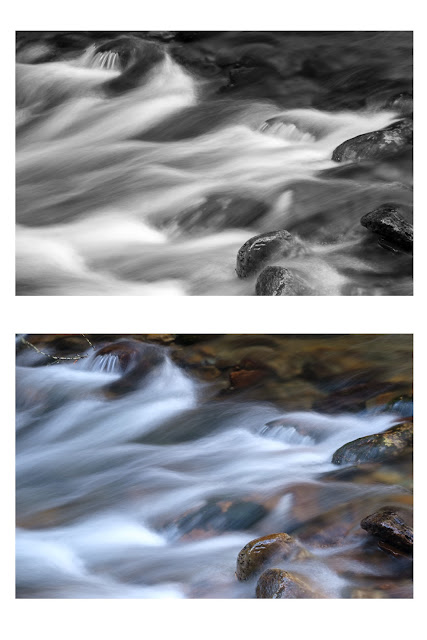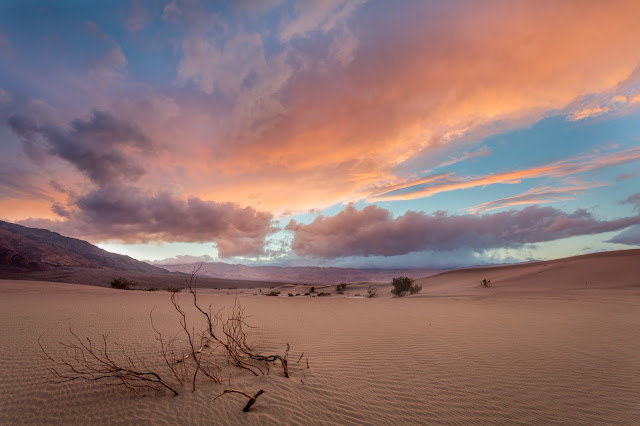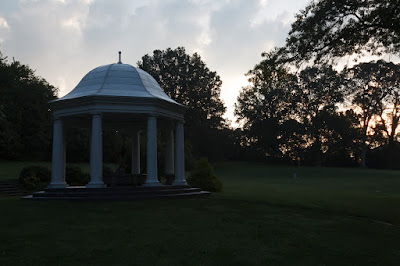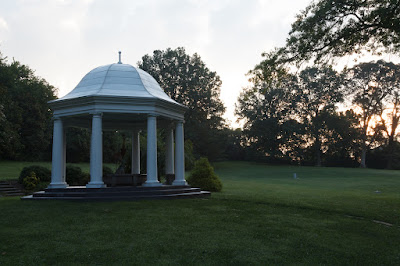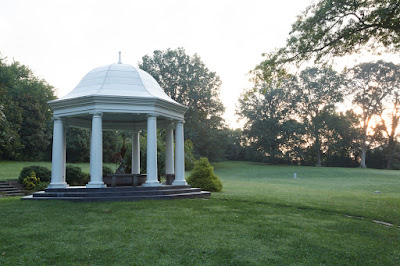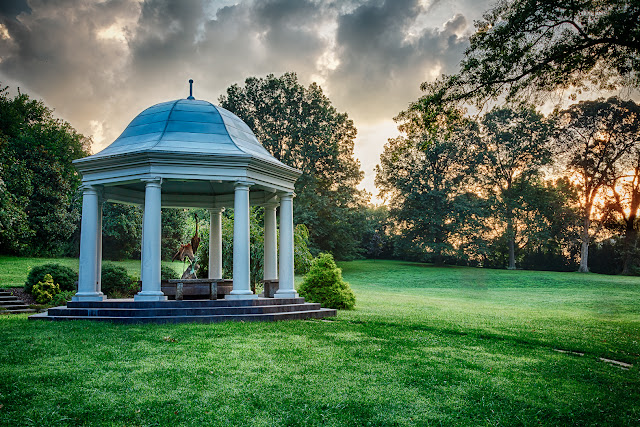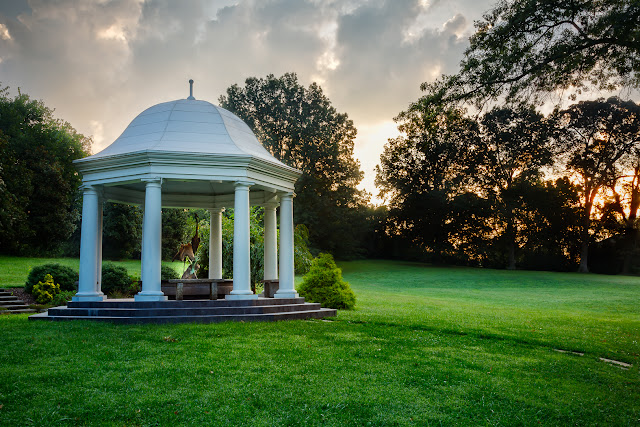One of my favorite waterfalls can be found in Western North Carolina near Rosman. It's not in a National Park, National Forest or even a State Park. In fact, it's not on public lands at all. It is in the back yard of a private residence! The owners are nice enough to allow, and even encourage, visitors to their own private waterfall on Shoal Creek.
After parking behind the house and walking about 200 yards the trail climbs a very short distance and then descends a set of stairs to the base of the falls. This is the first view of the falls taken next to the small pool below the 60-foot falls.
 |
| 1/2 sec at f/16 |
I've been here twice and neither time was there a lot of water flowing over the falls. I think this level of water is just about perfect. It allows individuals streams to separate when falling over the rocky bluff. There is a lot of interesting details and patterns in these falls. While you can easily see the entire waterfall from this vantage point, there is much more to see and photograph.
Landscape photographers need to move around and "work the scene". Avoid the temptation to place your tripod in the first place you find. Move closer or farther back. Use your zoom lens, which can give a different view from moving closer. Get lower. If possible, get higher and shoot down. We didn't stay long enough because standing in water with thunder storms near by is not a good way to live long and prosper.
 |
| 1/2 sec at f/16 |
Hoping across the rocks to the center of the stream gives you a slightly different perspective with the rocks in the foreground. The first and second shots include the lush green foliage and thick moss on the sides of the waterfall. It was an overcast day and the soft indirect light really made these greens pop.
 |
| 1.8 sec at f/16 |
The pool below the falls is not very interesting and does not add much to the composition. Wading through the pool I got closer to the falls and made the shot above, cropping out most of the pool and the gray skies. You'll notice I also cropped off the top of the falls. I did this to emphasize the shapes and patterns in the lower falls, which I found to be very interesting.
 |
| 2.0 sec at f/16 |
I think the triangular shape of the bottom of the falls with the water flowing down the stair step to makes an interesting composition. I was able to include just enough of the water flowing in from the left and the greens in the upper right.
Tall waterfalls like this typically work best as vertical portrait orientation shots. However, the horizontal ledges in the falls made an interesting landscape orientation composition when I zoomed in closer.
 |
| 0.9 sec at f/16 |
I zoomed in closer to emphasize the hard geometric lines and shapes of the rocks and the soft flowing water. I always like green plants or moss showing through behind a waterfall.
 |
| 4.3 sec at f/16 |
All these photos were shot at ISO 200 and f/16. The shutter speed varied due to the changing light conditions. By the time I made this last photo the skies had turned dark from the returning thunderstorms. It was time to head for the safety of the car again.
Making Photos With Flowing Water
To make photos with the soft flowing water you should start with a shutter speed of 1/2 second and vary it to get different effects. You might need to adjust your exposure compensation or use manual mode to not let the white water become over exposed in the long exposures. Of course, your camera must be steady through the long exposure so a tripod is pretty much essential to keep the rocks solid and sharp. If you place your tripod in a stream be aware that the water will introduce some movement and potentially blur your long exposure photos. I place my hand on the tripod and press down during the shot to control as much of the movement as possible.
The other thing I find to be essential for these shots is a polarizer filter. This will reduce the glare off the wet rocks and foliage. Be sure to turn the filter to adjust how much glare you want to remove.
Finally, if you have read this far you probably want to know where these falls are so you can visit them yourself. These are Eastatoe Falls near Roseman North Carolina.
Directions to Eastatoe Falls:
- From Rosman NC, drive south on U.S. 178 for approximately 3.4 miles to a private drive on the right.
- There is a sign for Mountain Meadow here, and the driveway leads back to a house, and what used to be a craftshop on the left.
- The home owners have made a small parking area behind the house labeled with "Park Here" signs. The trail leads across the lawn into the woods and to the falls.
Please be courteous and respectful when visiting these falls. There are many beautiful falls on private property, but very few of them are accessible to the public because the land owners do not allow access.




